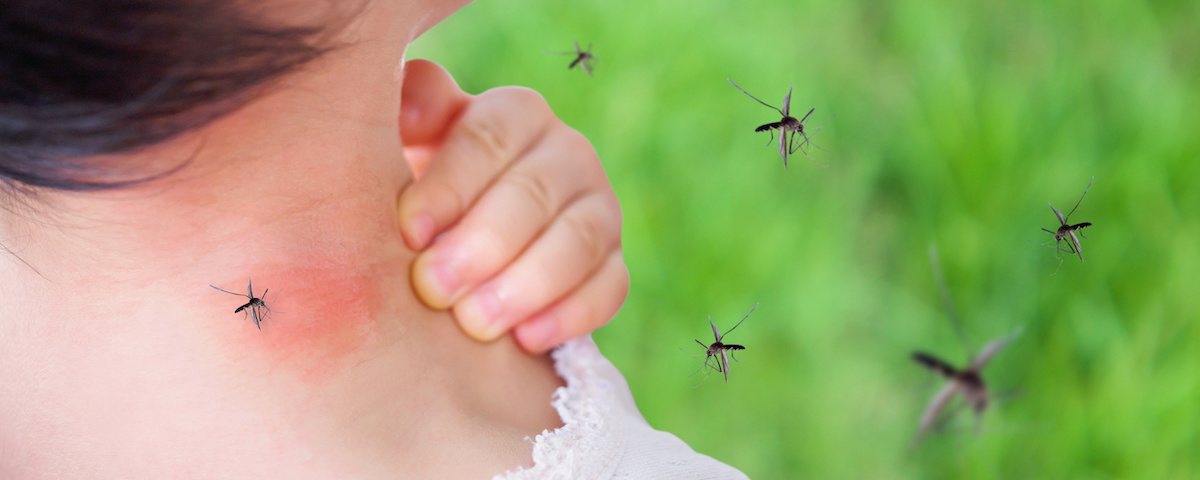
Mosquitos are one of the most dreaded pests that plague Florida during the summer months. With their quick life cycle, annoying presence, and dangerous bite, mosquitos are a pest you want to prevent and repel as much as possible. Mosquitos are also responsible for transmitting dangerous diseases like malaria, West Nile virus, yellow fever, and more. Traditional store-bought mosquito repellent contains DEET and that can be dangerous for your lawn, your family, your pets, and you. While there are alternative options and DIY options for repelling mosquitos, the best way is to prevent and reduce their presence in your yard altogether.
Having a thorough understanding of their breeding cycles, habitats, and habits can help your efforts in preventing and reducing mosquito infestation in your backyard.
Where Do Mosquitos Come From?
It often seems as mosquitos “appear overnight”. One moment you are relaxing in your yard without an issue and the next day you are surrounded by pesky little bugs that leave itchy bumps following their bite. If this is your observation, then you aren’t very far off.
A female mosquito only needs to mate with a male mosquito once to be able to produce eggs up to five times in a single summer. After mating, the female mosquito will rest for a few days before finding an optimum location to lay her eggs. Female mosquitoes lay their eggs in areas that provide sufficient moisture. This includes areas like swamps, marshes, puddles, and anywhere else that might have stagnant water.
A mosquito’s life cycle is very short. This means from the time a female mosquito lays eggs to the time they are fully formed adult mosquitos, only a month has passed. In addition to being fast, they are also plentiful. Preventing them from breeding can greatly reduce a mosquito infestation in your yard.
Mosquito Breeding Locations
It is very possible when you take a look at your yard, you are underestimating the number of potential breeding spots for mosquitoes. It only takes a very small amount of stagnant water for a mosquito to lay her eggs. The best place to start is eliminating all areas of stagnant water in your yard. These can include:
- Planters and pots
- Kids toys
- Gutters (with poor drainage or clogs)
- Tarps
- Tires
- Pet bowls
- Birdbaths
- Open trash cans or buckets
- Sandboxes
- Areas that are prone to puddles after rain
- A pool that lacks proper maintenance
- Anything that collects water and poorly drains
What to Do?
Dump it out: After inspecting your property for any stagnant water, dump it out! This takes away the opportunity before the mosquitoes even lay any eggs. If you do have tarps or coverings on anything outside, make sure they are tightly fitted and water doesn’t pool in any areas. Regularly check and clean kids’ toys and pet bowls if left outside.
Clean up your trash: Even the smallest about of water can be used as breeding grounds. Regularly pick up bottles, cups, cans, etc. and then throw them away. Remove any old car tires from your property and drill holes in the bottom of tire swings to avoid water pooling.
Be mindful of any water features on your property: If you have a decorative pond or live near a small pond or drainage canals, be sure to pay attention to standing water and speak to an expert on options to prevent mosquitos.
Mosquito-proof your yard: Keeping your lawn tidy can make a big difference when it comes to mosquito infestations. Mosquitos love overgrown trees, brush, weeds, and grass. Consider planting things like lavender, peppermint, marigolds, citronella grass and more to naturally deter mosquitoes.
Call in the Experts
Once mosquitos are in your yard, they are hard to get out. Their presence is annoying and their bite can be dangerous. At DriveBye Exterminators, we are experts on mosquito prevention and removal. Enjoy a mosquito-free summer, call DriveBye Exterminators now!






